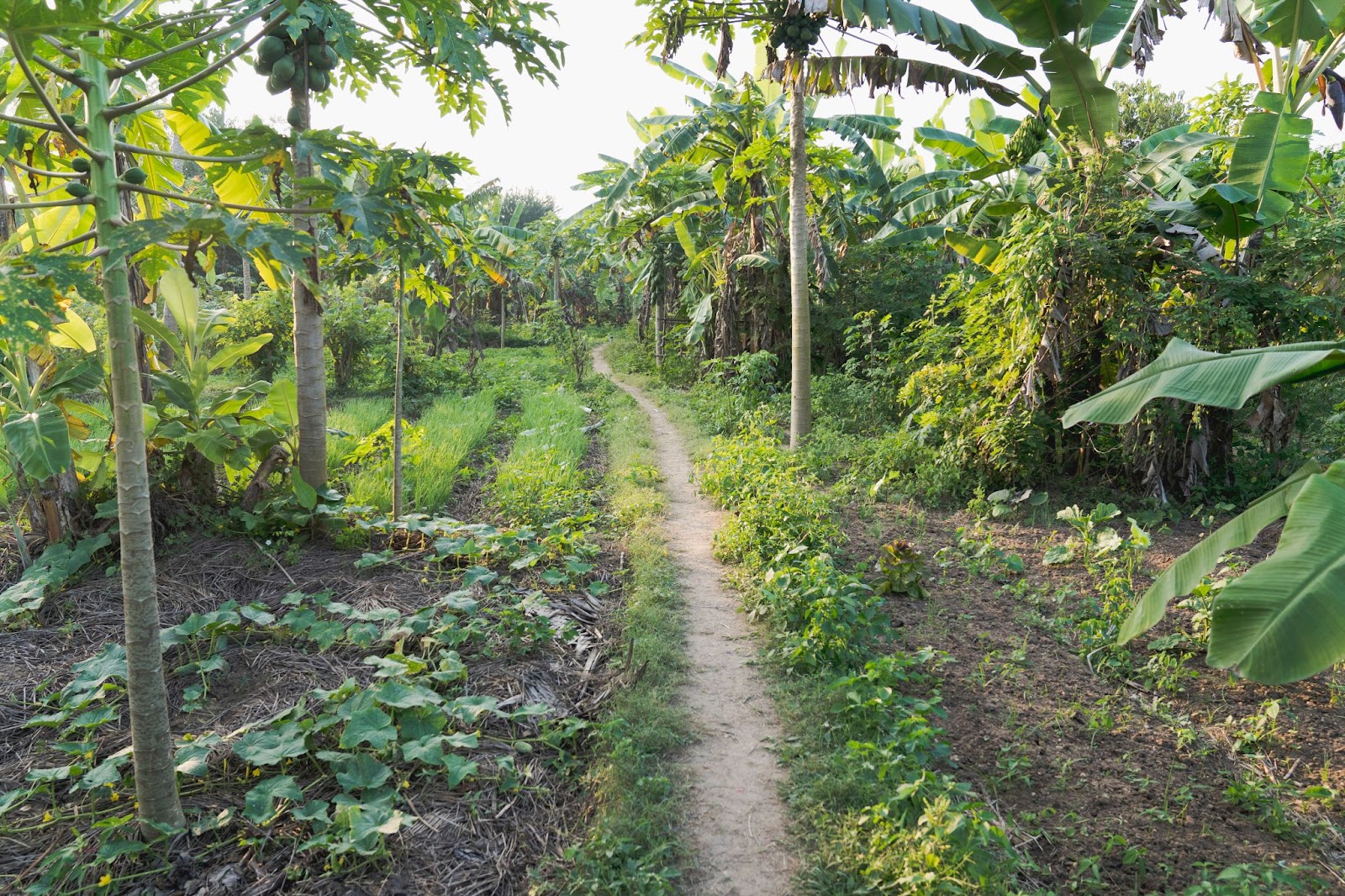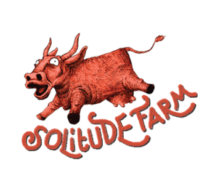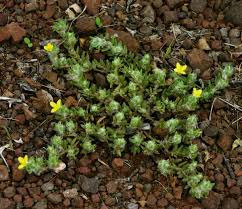Food Forest
June 12, 2023 2023-07-06 23:14Food Forest
Many people often ask me, “What is a food forest?” and “How does one create a food forest?” Starting a food forest is a wonderful journey, and I am fortunate to showcase an authentic example at Auroville’s Solitude Farm. This food forest is a magnificent display of plants growing together in harmony, each choosing its own path and maximizing the use of shaded areas. They intertwine and support one another, forming a multi-layered system.

To establish a food forest, it is crucial to understand the physiological differences and time durations among plants, allowing nature to take the lead in creating this diverse ecosystem. At the heart of this endeavor lies the return of organic matter. A healthy food system generates abundant organic matter through various means. For instance, when we grow bananas, we harvest not only the fruit but also the stem and flour, which leaves behind a significant amount of organic matter returned to the soil. The same goes for papayas and many other plants we cultivate, especially those intended for chop-and-drop purposes, such as Mexican sunflowers and gliricidia. Additionally, plants like Chaya, the Mayan tree spinach, contribute to the constant flow of organic matter to our fields. Grass, weeds, and pruned leaves and wood from larger trees like neem also find their way back to the soil.

When this well-established system is in place, the techniques employed may vary based on topography, geology, geography, and climate of the particular bio-region. In Solitude, we witness the growth of guavas, Ramphal, custard apples, mangoes, and mohua trees, all flourishing on their own accord. It’s truly exciting to see nature taking the lead in decision-making. As the forest thrives, we observe the emergence of drumsticks, papayas, turkey berries, kanthari chilies, and various weed species. Underneath, a diverse array of spinach, herbs, and medicinal plants like mudakathan, balloon vine, climbing pea brinjal, and cardiospermum thrive. These plants hold immense value in our daily cafe operations, where we utilize them in meals, sell them as dried powders, or include them in baskets for others to enjoy. By recognizing their value and putting them to use, we honor all these plants on the farm. We allow them to grow where they please, expressing our gratitude for their presence.
Moreover, we cultivate plants like turmeric, pineapples, taro, Assamese giant lady’s finger, and Mexican yams, which propagate consistently. Recently, we experimented with sugarcane, realizing it is essentially grass. Consequently, we planted sugarcane along many borders, resulting in its growth throughout the farm. Similarly, perennial toor dal (pigeon pea) has a three-meter taproot, which not only provides valuable data but also offers ecological benefits by extracting minerals from the subsoil. It’s an absolute honor to be part of such a self-regenerative and emerging regenerative system. We receive many praises, but it’s hard to justify because our success mainly stems from consuming local foods and continuously exploring their potential. Mother Nature has played a significant role in our journey.
The beauty of starting a food forest is that anyone can do it; it’s not complicated. Simply make holes in the ground and plant trees, ensuring an understanding of appropriate spacing. Begin integrating plants like bananas, papayas, drumsticks, sundakai, kanthari chilis, and agathi spinach. Gradually introduce tubers such as air potatoes, taro, elephant foot yam, along with thippili, pineapples, and turmeric. Finally, incorporate various spinach varieties and learn to identify and utilize beneficial weeds. As you engage in this process, you’ll notice a community forming around you, even if it starts with just one person or a school class showing interest.

Ultimately, the pinnacle of a food forest lies in returning organic matter to the soil, not by recreating it, but by cherishing and allowing it to flourish and blossom. This act naturally brings people together. In modern societies, where disconnection and isolation prevail, there is a growing disease called “outsiders” in England, where people lose their short-term memory. This is a troubling and traumatic condition, and one cannot help but associate it with the food we consume. When individuals become disconnected from one another, unable to cooperate or celebrate collective values, such illnesses manifest. It is crucial that we redirect our focus and energies towards food, feeding children in schools, and fostering a sense of togetherness and celebration through our essential need for nourishment. The food forest serves as the ideal means to achieve this. At Solitude Farm, we have over 200 edible plants thriving, many of which grow naturally without human intervention.

Permaculture Weekend Workshop
Join us on a road back to nature with this intensive and hands-on workshop that will empower you to start growing your own food and gain insight into knowing where your food comes from!

Weekly
Mini-Workshop
Join us on a road back to nature with this intensive and hands-on workshop that will empower you to start growing your own food and gain insight into knowing where your food comes from!

Permaculture Weekend Workshop
Join us on a road back to nature with this intensive and hands-on workshop that will empower you to start growing your own food and gain insight into knowing where your food comes from!

Weekly
Mini-Workshop
Join us on a road back to nature with this intensive and hands-on workshop that will empower you to start growing your own food and gain insight into knowing where your food comes from!











